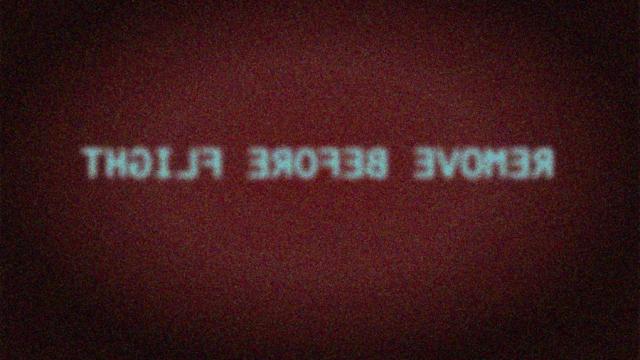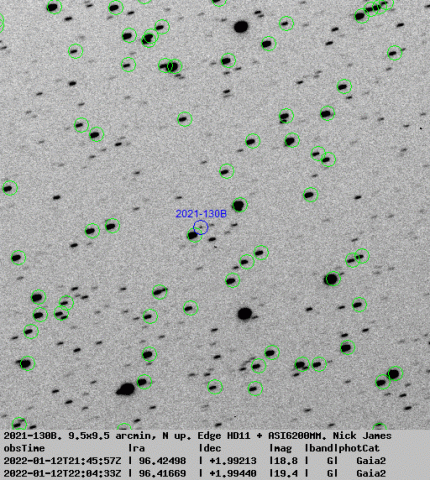› Forums › General Discussion › Following JWST through Orion to L2
- This topic has 63 replies, 14 voices, and was last updated 3 years, 10 months ago by
 Nick James.
Nick James.
-
AuthorPosts
-
7 January 2022 at 10:51 pm #585094
 Nick JamesParticipant
Nick JamesParticipantThat’s a really nice observation. If you look at images of JWST you can see that we are mainly seeing the 21x14m sunshield but there is other stuff on the sunward side of the spacecraft including the solar panel and the spacecraft bus and propulsion units. Some sunlight will be scattered back to us from these other components but there will be strong glints from the sunshield which will be highly dependent on the relative angle between the sun and the observer. Given JWST’s configuration even small changes in this angle will make a significant change to the magnitude we see.
When the telescope is operating at L2 it is in a large radius halo orbit and the attitude will change for each observation since the telescope and sunshade are fixed to each other. It will be an interesting project to try to predict when glints would occur given the target list that the telescope will be aimed at.
8 January 2022 at 8:39 am #585095 Philip MasdingParticipant
Philip MasdingParticipantThanks Nick,
As you say maybe the sun / telescope / observer angle doesn’t have to change much for a big variation in brightness given how shiny it is.
It will be an interesting project to see if glints are predictable. I previously did some work predicting glints from classified satellites with some success. The calculation is basically a whole load of co-ordinate transforms.
Cheers
Phil
8 January 2022 at 1:52 pm #585101 Alex PrattParticipant
Alex PrattParticipantHi Phil,
This posting on the MPML forum (Archive visible to all) confirm its changes in brightness
JWST 095 Observations (groups.io)
After observing other targets last night I had a look at JWST to get some video astrometry. By then thin cloud was coming and going. I haven’t reduce my data but at Jan 7.903472 it was near to mag 15, but a while later at 7.905556 it looked to be around mag 14.5.
Cheers,
Alex.
8 January 2022 at 6:13 pm #585103 Alex PrattParticipant
Alex PrattParticipantJWST first light…
This tongue-in-cheek image has been doing the rounds

Originally a bit of fun by ESA staff for an earlier mission
https://twitter.com/esa/status/1479405861130977280/photo/1
Alex.
9 January 2022 at 12:55 pm #585104 Nick JamesParticipant
Nick JamesParticipantThe entire deployment sequence seems to have gone without a hitch with both folding sides of the primary mirror now locked in place. That is pretty amazing given the complexity.
9 January 2022 at 2:10 pm #585105 David SwanParticipant
David SwanParticipantI’ve been following it closely: yes, quite amazing.
9 January 2022 at 3:06 pm #585106 Robin LeadbeaterParticipant
Robin LeadbeaterParticipantPhew! Now lets hope all the 126 actuators which align the mirror segments work ok. The number of moving parts in the instruments is mind boggling too. NIRSpec apparently has a matrix of a quarter of a million focal plane “microshutters”
15 January 2022 at 6:22 am #585111 Nick JamesParticipant
Nick JamesParticipantI know some people are still attempting to image both objects. The ephemerides available from Project Pluto are still good but the magnitude of the upper stage was quite faint last time I imaged it on Jan 12.9. It is around mag 19 at the moment. The magnitude of JWST is highly variable depending on the precise orientation of the spacecraft.
 15 January 2022 at 10:23 am #585112
15 January 2022 at 10:23 am #585112 Philip MasdingParticipant
Philip MasdingParticipantFurther to my earlier observation of JWST I did a follow up observation last night (14/01/2022). Interestingly the brightness followed exactly the same curve as on 05/01/2022. In the graph I have plotted the two curves together to do this I time shifted the data for 14/01/2022 by 9d 1.173 hours which gave the best alignment. The 2 additional spikes in the data for the 14th were also seen by a friend who observed on the 12th. So it seems the pattern repeats on a daily basis. What this means for the movements of the spacecraft or the angle of illumination is an interesting question!
 15 January 2022 at 11:07 am #585113
15 January 2022 at 11:07 am #585113 Nick JamesParticipant
Nick JamesParticipantPhil – That is a really interesting observation.
I assume at the moment the spacecraft attitude will be quite stable. I don’t know whether the solar array can be steered to some extent relative to the bus but for now I would guess that they are keeping the spacecraft sun-pointing although I don’t know that for sure. If that is so then the brightness variations will be due to the phase angle (i.e. sun, spacecraft, observer). The repeatability here implies a diurnal variation. At the current range (about 1.2 million km) the Earth has an apparent diameter of 0.6 degrees so the effect of parallax on the phase angle is very small although certainly large enough to affect the timing of specular glints depending on where you are.
It would be very interesting to get two observers separated by a long baseline to do photometry at the same time. I suspect that they would see quite different profiles.
Once JWST goes operational the spacecraft attitude will be continually changing depending on the target so these glints will become much more (apparently) random.
21 January 2022 at 7:40 am #585143 Nick JamesParticipant
Nick JamesParticipantI’ll be talking about JWST at the meeting tomorrow. If you have any recent observations please let me know by tonight. I got some astrometry of the Ariane upper stage a couple of nights ago and it is now around magnitude 19. The observatory was mag 16. Everything seems to be going very well with the mission so far.
26 January 2022 at 8:32 pm #585167 David SwanParticipant
David SwanParticipantI have just been catching up with the latest news on JWST in one of my favourite publications. This report, dated 26 Jan, suggests that one can spot the observatory in the bowl of the Big Dipper with binoculars. James Webb Space Telescope is seen from Earth as it settles into orbit | Daily Mail Online
27 January 2022 at 12:28 am #585169 Robin LeadbeaterParticipant
Robin LeadbeaterParticipantTo be fair, NASA do have access to some pretty large binoculars !
27 January 2022 at 1:44 am #585170 Robin LeadbeaterParticipant
Robin LeadbeaterParticipantSo.. I went looking for what Lee Feinberg actually said in the teleconference. He did indeed say it could be seen with binoculars in Ursa Major, but…… he was talking about the target they were going to use to collimate the mirror (HD84406)
https://www.youtube.com/watch?v=VmD8pefGG2k&t=949s 39 minutes in
27 January 2022 at 7:16 am #585171 David SwanParticipant
David SwanParticipantGood research, Robin. I thought it must have been based on something. David
27 January 2022 at 7:32 am #585172 Nick JamesParticipant
Nick JamesParticipantThat is an impressive mangling of two perfectly good facts (you can image the spacecraft with a telescope from Earth and the first calibration star is a binocular object in UMa) to produce a typically silly Daily Mail science story. Thanks both for giving me a chuckle over breakfast.
27 January 2022 at 10:25 am #585173 Daryl DobbsParticipant
Daryl DobbsParticipantHilarious, but not their usual headline of something smashing into the earths orbit as it hurtles past, bigger than the asteroid that killed the dinosaurs! Bigger than Big Ben is another favourite of theirs, which is the bell!
5 February 2022 at 12:23 am #585203 Nick JamesParticipant
Nick JamesParticipantJWST has been mag 13.0 from around Feb 4.85 to Feb 5.01 tonight, pretty bright for an object at L2. The Ariane upper stage, which is now 2.5 million km away, was around 20.2 at Feb 4.95.
5 February 2022 at 9:40 am #585204 Nick JamesParticipant
Nick JamesParticipantAs of Feb 3 the telescope is pointing at HD 84406 in UMa. This should mean that we can calculate the aspect angle of the sunshield and the effect this has on the apparent magnitude as seen from the Earth. It might explain why the telescope was so much brighter last night. The optical collimation has now begun and the blog has a fascinating description of how it will be done. It is well worth a read.
12 February 2022 at 12:53 am #585228 Nick JamesParticipant
Nick JamesParticipantIf you haven’t seen it yet there is an amazing “selfie” of JWST’s primary mirror on the JWST blog taken using the pupil imaging lens in NIRCam.
-
AuthorPosts
- You must be logged in to reply to this topic.
